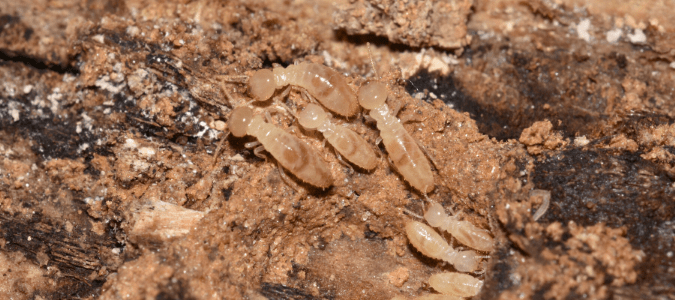
There are many reasons Texans love calling this part of the country home. We have warm weather nearly all year round, with so much to offer in terms of nature, history, sporting events, museums and other attractions. Unfortunately, we aren’t the only ones that are drawn to this state. Termites in Texas—specifically, the subterranean, Formosan and drywood varieties—are a major problem for countless homeowners. These destructive pests are responsible for costing homeowners in Texas hundreds of millions of dollars of damage each year.
How does this tiny pest get away with so much?
Subterranean termites, the most common species of termite found in Texas, tunnel in moist soil in search of cellulose, their primary food source that is found in wood, plants, cardboard, insulation and even pet excrement. Because these pests are tunneling underground, many homeowners are unaware they have a problem until these voracious insects have already caused extensive damage. These types of termites form large colonies, some with as many as two million members. Subterrranean termites work hard to supply food for the colony by eating away at whatever cellulose they can find.
For many homeowners, the first sign of a termite problem is flying termites on their property or discarded termite wings near window sills. Subterranean termite swarms usually occur during the spring and summer months, usually on a warm day with calm winds, and occasionally after it’s been raining. A termite swarm happens when the colony grows so large that reproductives fly off to start a new colony. Unfortunately, discovering termite swarmers inside your home generally indicates that you have an established colony somewhere on your property.
If you’re wondering why a termite colony might choose your property as opposed to someone else’s to settle down, you’ll want to keep in mind that the most important draw for a termite is the presence of cellulose, usually found in damp or rotting wood. However, in a pinch, termites will feast on a variety of other materials, including books, wallpaper and even drywall.
If you suspect you may have a termite problem, look for the following conditions which could attract these destructive pests:
- Dead trees and limbs that touch your house
- Dead or rotting plant matter along your home’s foundation
- Fallen logs within a few yards of your living structure
- Wood piles on a wooden fence line that touches your home
Consider whether a termite could reasonably travel between this decomposing wood matter and your home. Have the wood removed if you think your home is at risk.
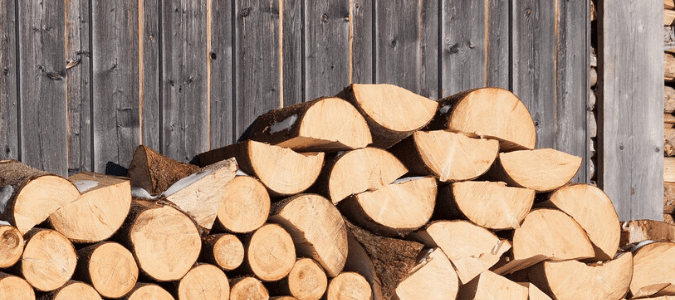
If you are concerned about possible termite activity, your best course of action is to bring in a pest control professional promptly to perform a termite inspection. While you are waiting for this to be done, there are some things you can do to prevent an infestation, including:
- Eliminating sources of excess moisture around your home’s perimeter
- Diverting water away from your property with properly functioning downspouts and gutters
- Storing firewood at least 20 feet away from your home
- Keeping mulch at least 15 inches away from your foundation
- Ensuring your crawlspaces are well ventilated
- Maintaining your property by clearing dead and fallen tree debris
- Addressing drainage issues and repairing any leaks, especially near wood
- Closing any gaps or holes where outside power and plumbing sources go into the home
- Placing plants away from vents
For peace of mind and to avoid having to deal with structural damage to your home, call in a professional for regular termite inspections.
Do-it-yourself treatment options are available for most types of pest problems. While this applies to termites as well, homeowners should know that these creatures tend to become more established more quickly when compared to most other types of pests. Educating yourself about Texas termites, their habits and the signs you may have them in your home can help you better identify and discover evidence of termites, so you can reach out to a professional and minimize damage.
In this post, we’ll describe termite habits and behaviors, as well as discussing different types of materials that are termite resistant. But first, we’ll review the differences between the two most common species of termites in Texas, so you can identify what problem you’re dealing with and the most effective treatment methods.
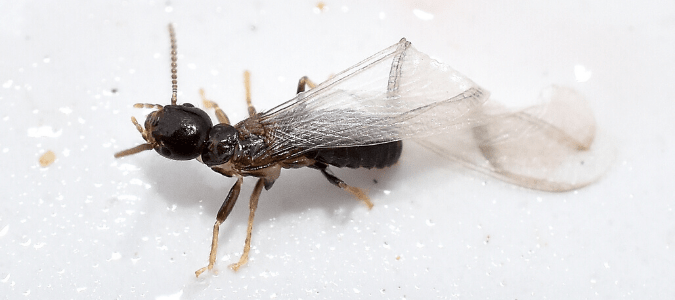
Drywood Termites vs. Subterranean Termites: What’s The Difference?
There are a number of differences between drywood and subterranean termite species. First off, you can tell these varieties apart by their appearance. Second, each has unique swarming habits. In addition, the two types look for specific amenities in a dwelling. Understanding these distinctions can help you identify which type of termite you’re dealing with, which can tell you how big of a problem you may have on your hands, and what you should be doing to address it.
Perhaps the most important thing for homeowners to remember is that subterranean termites cause 95 percent of termite damage—not just in Texas, but across the entire country. Because what they eat and where they live make them harder to detect than their drywood cousins, subterranean termites are often found much later, when a colony is more established.
You can learn to identify each type of termite by paying attention to differences in appearance, swarming habits and habitat and diet.
Appearance
Subterranean flying termites are dark-colored with one thick, dark vein that runs parallel to the top of the wing, as you can see in the photo above. Worker subterranean termites are a milky white color with no wings or eyes, and hard mouthparts adapted for chewing wood. Soldier termites are meant to protect the colony. So, while the body looks similar to that of the worker termites, soldiers have a larger head and bigger mandibles to fight off any enemies, which are usually ants.
Worker drywood termites are cream-colored, but can appear white when close to wood. Soldier termites are a bit darker in color, ranging anywhere from cream to brown. Reproductives are often brown or black in color. Reproductive termites are about half an inch long with transparent or smoky coloration on their wings. Three major veins are visible on drywood termite wings. If you wonder which type of swarmer you have in your home, collect the wings and store them in alcohol until a pest control professional can identify them.
Swarming Habits
As previously mentioned, subterranean termite swarmers are active in the spring and summer. These termites are more likely to swarm when it’s warm out with only a light wind. Drywood termites, on the other hand, swarm in the late summer and fall months, and they tend to swarm at night.
Habitat And Diet
A key difference between these two pests is that subterranean termites live underground because they need a certain amount of moisture in order to stay alive, whereas drywood termites don’t require a wet environment. Drywood termites like to nest under wooden roof shingles, eaves or siding. Because drywood termites nest in wood, you can usually find fecal pellets nearby which will look almost like pencil or wood shavings and are similar in color to whatever wood is around them. Subterranean termites nest in moist soil. These termites can only chew through softer wood.
Another difference between subterranean and drywood termites is their sleeping habits.
Are Termites Nocturnal?
The time of day in which termites are most active depends on the species of termites you’re dealing with. Generally speaking, we consider creatures that sleep during the day and are active at night nocturnal. Drywood termites fit this description, so you aren’t likely to see these varieties during the day. However, subterranean termites are active around the clock. Yes, you read that right—subterranean termites don’t sleep. As a matter of fact, part of the reason why subterranean termites are so destructive is that they never stop eating.
Now that you know what a danger these destructive insects pose to your home and belongings, you probably want to know what can you do to eliminate these pests.
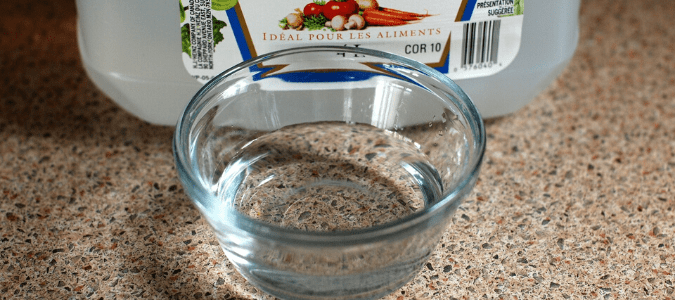
What Kills Termites Naturally?
While some DIY methods may be successful in killing some termites, colonies can grow to have up to two million members, and queen termites can produce one egg every three seconds. That’s almost 30,000 eggs in just one day! With this in mind, the best way to protect your home from extensive damage is by contacting a pest control professional.
If you would like to try to keep your termite population under control while you wait for your specialist to arrive, some homeowners try one or more of the following approaches:
- Nematodes can eliminate some termites. However, you need to introduce a large quantity of these parasitic pests on to your property in order for them to even slow termite population growth.
- Vinegar can harm the termites that you see, but because termites normally hide in the soil, this method will have a limited impact.
- Borates can be effective if you sprinkle them in areas where you’re seeing termite activity. Similar to vinegar, this substance will only harm those termites it comes in contact with.
- Orange oil may kill some termites on contact. Once again, you’ll need to locate the entire colony in order for this to be effective, which is challenging because termites often build many different underground tunnels leading to the nest.
- Wet cardboard can attract termites, so some homeowners use it as a type of bait. Once you have termites on your wet cardboard, place it out in the sun. Since termites require moisture to survive, subterranean termites will dry up and die. Again, this will not be effective in eliminating the entire colony, but just a select few.
The most effective “natural” termite control is preventative and involves using termite-resistant materials during the construction process. If you begin to see signs of a termite infestation, your best next move is to reach out to a reliable termite control company.
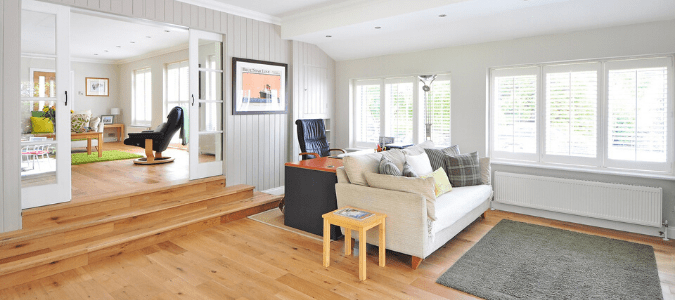
Do Termites Eat Treated Wood?
While termites tend to leave new pressure-treated wood alone, homeowners need to keep in mind that it is still only termite-resistant, not termite-proof. Moreover, as those pressure-treated beams and studs age, your risk for infestation increases. That means that you need to schedule inspections routinely to check the property for termite activity. Another option if you are designing a new home is to build with wood-composite materials. These materials combine natural material with plastic for greater resistance. Even that, however, isn’t 100 percent fail-proof when it comes to these pests.
Are There Any Natural Wood Materials Resistant To Termites?
Trees have a naturally termite-resistant inner core called heartwood. This densest part of the tree is non-living. Heartwood is too tough for termites to chew through easily, so when they come across it, they move on and look for anything softer in the vicinity. In addition, there are a few types of lumber that they don’t love, including yellow cedar, redwood, cypress and teak.
One material that is seen in more and more homes is bamboo. This very hard material is technically not wood, but grass, so it may offer some extra protection against termites. Remember, though, these pests eat anything with cellulose in it. So while it might not be a termite’s first option, you’re still not entirely protected from these destructive creatures.
ABC Can Help Texans Avoid Termite Damage
Given the potential damage that termites can cause, contacting a reliable pest control professional is often your best course of action if you are worried you have termites. The experienced technicians at ABC Home & Commercial Services know exactly where these pests like to hide. We can create a customized treatment plan for your home that incorporates scientifically proven treatments that can eliminate the entire colony of termites. In addition, we offer an ongoing termite monitoring program that can put your mind at ease and help you avoid any potential problems.
